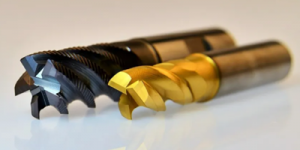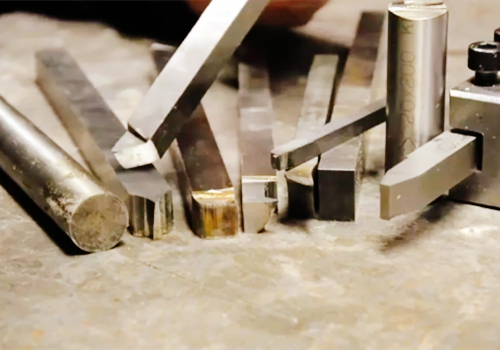Alloy steel is divided into silicon-manganese carbon steel, stainless steel, high-speed steel and silicon electric steel according to the different elements. Before the invention of high-speed steel, the cutting tool material in the metal processing industry is mainly high carbon steel, but the cutting speed is relatively slow, usually below 10m/min. The cutting speed of High-speed steel is greatly improved compared with that of carbon tool steel and can up to 20m/min when cutting medium carbon steel. In the cutting field, high carbon steel has been considered as an economical alternative to high-speed steel, here today will introduce the history of them.
 High-Speed Steel, short for HSS, is a type of tool steel with high hardness, wear-resistance, and heat resistance, in which W, Cr, V, Co and other alloy-elements are added to carbon steel with a carbon content of 0.7~0.85%. The excellent performance red hardness is its most important feature and it can maintain high hardness even at high temperatures. High-speed steel has wide application in metalworking cutting tools and can maintain high hardness even when the temperature reaches 500℃ in high-speed cutting and maintain HRC above 60. This property is called red hardness and is the most important characteristic of high-speed steel.
High-Speed Steel, short for HSS, is a type of tool steel with high hardness, wear-resistance, and heat resistance, in which W, Cr, V, Co and other alloy-elements are added to carbon steel with a carbon content of 0.7~0.85%. The excellent performance red hardness is its most important feature and it can maintain high hardness even at high temperatures. High-speed steel has wide application in metalworking cutting tools and can maintain high hardness even when the temperature reaches 500℃ in high-speed cutting and maintain HRC above 60. This property is called red hardness and is the most important characteristic of high-speed steel.
Tungsten (W), molybdenum (Mo) and cobalt (Co) are the key elements to maintain the red hardness of high-speed tool steel and make it withstand the heat generated by the friction between tool and workpiece, improving the wear resistance. The ordinary high carbon tool steel has a very high hardness after heat treatment (quenching and tempering at low temperature) at room temperature, but when the temperature rises to 200℃ this hardness will drop sharply when the temperature continues to rise to 500℃, its hardness has dropped to the annealed state and completely lost the ability to cut the metal. Such shortcomings of carbon tools make HSS stand out. Since the invention of HSS, high carbon tool steels have been rapidly eliminated by HSS in the field of metal processing, and various brands of HSS have been invented and commercialized.
In 1965, powder metallurgy methods were invented to produce HSS by American Crucible Steels. The performance and service life of HSS have been improved greatly. High-speed steel is still the preferred tool material until today. Nowadays, tool materials such as hard alloy, ceramics, cubic boron nitride (CBN) and synthetic polycrystalline diamond (PCD) are constantly being invented. They can not only process faster but also maintain cutting performance at higher temperatures than HSS. But for the manufacture of tools with complex shapes and difficult grinding, such as a broach, shaving cutter, gear shaper, etc., HSS is always given priority.
Grade M2 is the “standard” and most widely used industrial HSS. It offers high wear resistance and quenching hardness and its surface hardness can reach 64-66HRC, can be used for high hardness of various cutting tools. As an experienced tool steel supplier and stockist, Wiho steel work with china leading steel plant, selling the factory-price M2 block, plate and rod for your steel needs with additional service and timely delivery.







